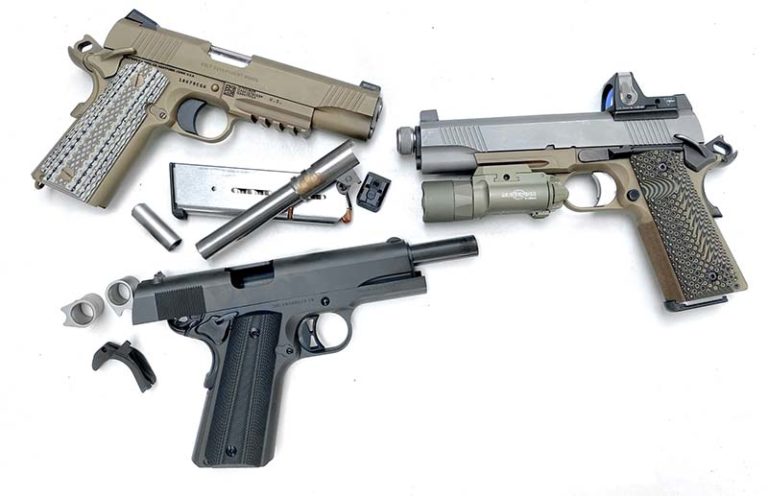
It's not easy to build a 1911, but if you want a custom gun with a personal touch, it can be a worthy pursuit.
I’m something of a new dinosaur in my generation. I don’t own much technology, I hunt and grow much of my own food, and I have a deep-set love for the 1911. I’m an old man at an early age, apparently. In the course of my experiences with this venerable platform, I’ve come to respect it for its reliable performance, both mechanically and in terms of accuracy.
That said, I’ve also come to understand the valley between working on modern guns, such as a Glock or P320, and the 1911. I have hundreds of working hours on the 1911, and I can honestly say that 90 percent of those hours were spent screwing something up.
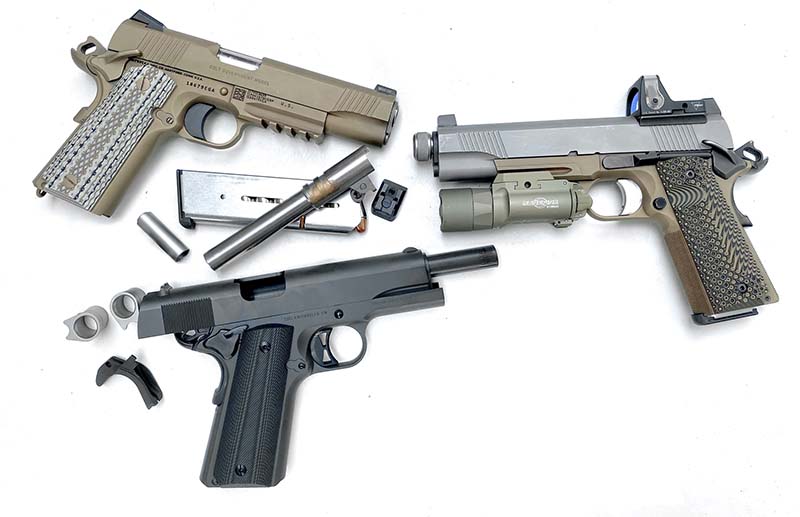
1911 Building Vs. Buying
Building a 1911 by hand doesn’t mean it’ll turn out functional or accurate. The crux of the argument here is that, in theory, a hand-built 1911 will give you pride in ownership as well as bragging rights in addition to tighter tolerances. Some would consider it to be an apex of personal ability to get one of these guns up and running from their choice parts, and for many this is true. I love the pistols I’ve put sweat and blood into, but there’s always the nagging doubt that I didn’t do something correctly.
The first consideration you’ll need to make when looking at a project like this is just what you plan to get out of it. If it is, in fact, the journey you seek, then by all means put in the effort. If you’re trying to save a dollar, this isn’t the way to go. I really can’t make sense of people who think they’re somehow saving money by spending a minimum of 40 hours, maybe more, on top of parts cost, to come out with a gun that might—and might is a strong word here—be better performing than a factory gun.

I’m never one to judge a person’s financial status, and it’s true that not everyone can afford a $4,000 1911; however, there are many wrong ways to go about this. It’s not just the finished product you’ll end up with, but also a host of specialized tools necessary to make this old warhorse start running. I’ve done it with a few tools, the wrong tools and the right tools, and somehow there’s little difference: You’ll make a mistake, regardless of how well prepared you are.
Are you willing to eat the cost of a barrel you incorrectly machined? How about a frame or a slide? The associated cost of building one of these guns can be a deterrent, and you might end up with more money in tools than you have in the gun.
What I’d recommend is to write down a list of features you want your 1911 to have, such as barrel length, caliber, hammer and trigger style, and then look for a factory gun that closely approximates what you want. It might surprise you when you total up the shopping cart that your dream gun is as much as 50 percent more expensive than just biting the bullet and going with a full-featured factory gun.
With all that said, the reward of shooting a gun you built is substantial. Again, I don’t intend this to be a deterrent, but rather a call to fully investigate the requirements. Let’s have a look.
Diligence Required
To build a 1911—at a bare minimum—you’ll need a Dremel tool with basically every attachment made, a good table-top vice, drill press, files, sandpaper, lapping compound, staking tool, radius cutting jig, various punches and drift tools, calipers, lug cutters, a case of beer for your frustrations and a good bit of time on your calendar.
This isn’t a fast process; the fastest I ever built was 3 weeks, working on it a piece at a time. Average time spent on one is probably 3 to 6 months.
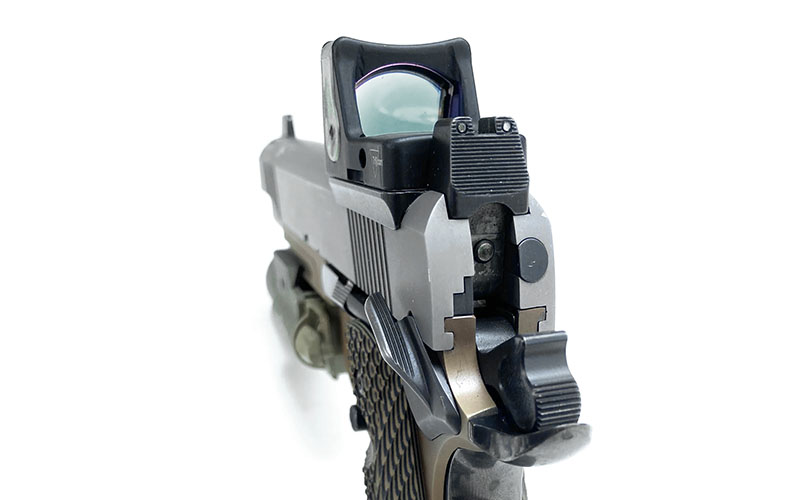
A lot of the problem with building a full pistol is that, if it’s your first build, you’ll also be learning how to use the tools. Instruction videos are a great resource, but they don’t allow you to get a proper feel for how the parts should look after they’ve been worked on by specialized tools.
I find this to be the hardest part of the whole process, because there’s a wide degree of variance between parts across manufacturers, and this can lead to problems on a wide scale. What if the slide you bought allows your barrel to drop right in? Is something very right or very wrong? I’ve had it happen where the lugs on the barrel were correct, but the lugs in the slide were too large. I thought it was an incorrect fit on the barrel and began working it over. You can guess what that bad calculation cost me.
Unlike today’s drop-in parts on the AR and Glock, the 1911 requires every part to be measured and looked at in detail. I don’t want to come across as pessimistic here, but you must check every single thing, even the tension of springs and how they work together. Building one of these guns can be so frustrating that you might end up just putting the parts in a bin and using them as replacements for your factory guns as need be. I’ve been there myself.
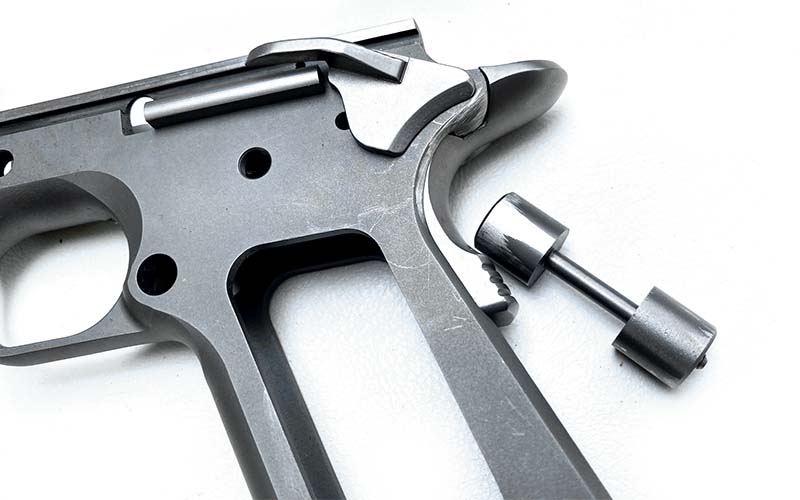
The Cheater’s Way
If you want a custom 1911 but don’t want to mess around with the heavy lifting, I have a method that I greatly prefer. Some purists will call me a cheater for doing things this way, but I think my version of custom building is perfectly sensible—and it results in an accurate and reliable pistol virtually every time.
My method is to locate used 1911s at my local stores or online listings and completely strip them down to the frame. Why would I waste my time with this when I basically bought a 1911 used and have a working gun? Well, what I’m after is the frame here because many of the factory guns I find out there are lacking in features and have subpar internal parts. What I enjoy about a factory frame is that it’s finished with parts that I know fit.
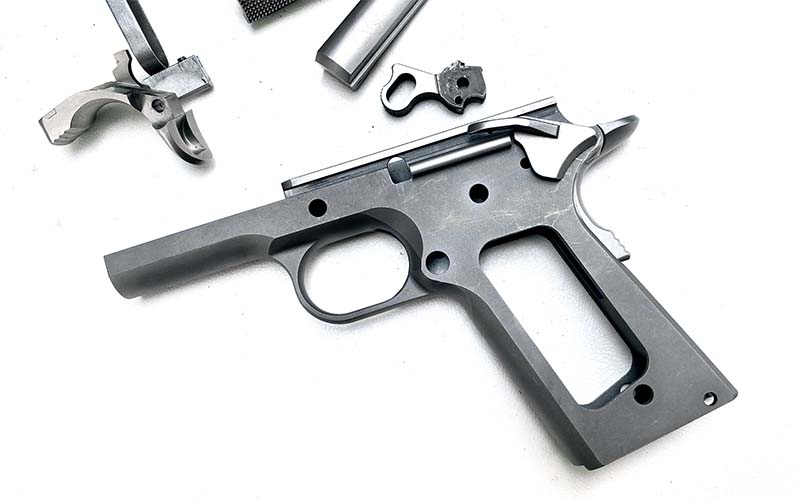
When I go in and measure the new parts, I can compare them to the old ones to draw exact numbers and specs, and then I can go about fitting them. If I want to go tighter, I can … knowing how much space I have to work with.
This way of doing things creates little if any frame work to be done, and the most labor will be fitting the new slide and barrel, which again should be easy, considering that the correct measurements are right there on the original parts.
My personal preference of frames is Sig Sauer. It’s a personal thing, but I dislike the “profile” on their slides and external extractors. I’m also not a fan of the Series 80 safety internals … but I like those Sig frames. The best part about going with a Sig frame is that it’s hard stainless steel, and the frame rails are usually just a hair (actually less than a hair) oversized, which really lets me get in there and make a precision fit to the slide. The fact that the Sig frames usually come pre-checkered on the front of the grip is also a plus for me because I can ensure my finished pistol has a coherent and functional wrap-around texture.
I’ve used other frames for this type of work in the past; many don’t require any modification at all and will readily accept new slides and barrels. In these cases, the pleasure of building the pistol is often over too quickly, and I’m left with a great gun but empty project hours.
What about the extra parts from the stripped frame? Well, I keep these as backups in case something goes wrong with the custom gun. If I need them, the extra parts are ready to go. Selling them is another option, and you might actually be able to fund most of the new parts by selling the old ones.
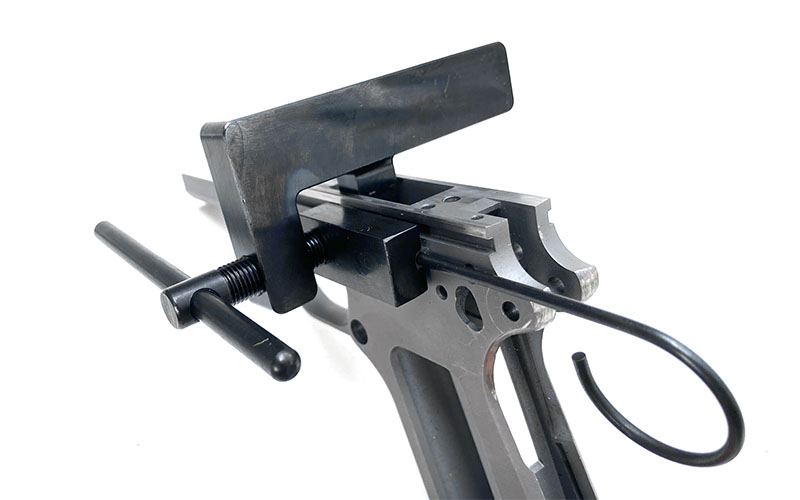
A Build By Any Other Name
The prevailing idea among 1911 guys is that my “cheater” method is somehow the wrong way to do it. I counter this with asking if it’s any less of a build to start a bolt-action on a custom action, or an AR on a stripped receiver. A custom bolt-action build is usually just a matter of attaching a barrel and chambering it, but how about a Remington build? Never has a person told me that buying a factory 700 and sending it in to be rebarreled and trued out is the “wrong” way to do it.
I ask the 1911 purists just how many parts need to be hand-fitted for a pistol to be custom, or how many factory parts are allowed to remain? I can’t get a clear answer, so I take my method as being effective and safe for the home builder to learn the craft. When it comes down to it, there’s just so much that can go wrong on a hand-build that taking this mid-level step is important to understand how the 1911 works.
If you have a new slide you want installed and know that your frame is fitted and working, you can focus on just fitting that slide. Once you have that knowledge, you can work on the barrel and so on and so forth. It’s easier to learn one step at a time and piece by piece than it is to take on the whole elephant. Is your 1911 “custom” with a new safety? I’d say maybe not, but even I don’t know where the line is between an accessorized factory gun and a custom gun on a factory frame.
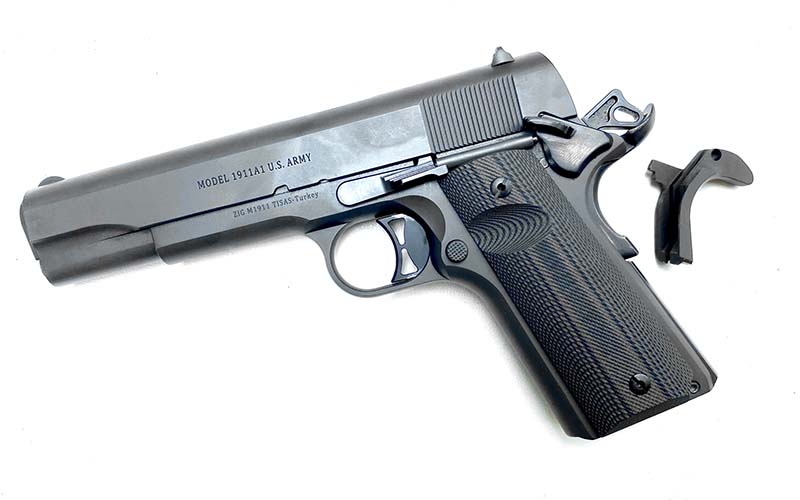
1911 Builder Beware
If you do decide to take on this mighty challenge, I’d start small and buy a 1911 to begin fitting custom parts to. You can always put the old ones back on if you need to. Building is and always will be a rewarding experience, and it’s my advice to ask for help when you have a question. Messing up is never more than a Dremel slip away … and that can be costly.
The true cost to build a 1911 is in the tooling, and you must also beware that these tools will get you close, but perhaps not all the way. The little bits of missing know-how are what’ll hang you up, and just having all the tools isn’t enough to make a perfect build.
This is a skilled undertaking, and often not a quick plug-and-play tabletop project. So long as you’re aware of this, you’ll likely make the 1911 gods happy with your offering.
Editor's Note: This article originally appeared in the October 2021 issue of Gun Digest the Magazine.
Raise Your 1911 IQ:
- Best 1911 Pistol Options For Concealed Carry
- Power On The Cheap: Best Affordable 10mm 1911 Options
- Why The Hell The 9mm 1911?
- Tips For Getting Your Perfect Custom 1911
- 4 Reasons Why The 1911 Pistol Remains On Top
- Thinking Soberly About 1911 Grips

Next Step: Get your FREE Printable Target Pack
Enhance your shooting precision with our 62 MOA Targets, perfect for rifles and handguns. Crafted in collaboration with Storm Tactical for accuracy and versatility.
Subscribe to the Gun Digest email newsletter and get your downloadable target pack sent straight to your inbox. Stay updated with the latest firearms info in the industry.

![Best Concealed Carry Guns In 2025 [Field Tested] Wilson Combat EDC X9S 1](https://gundigest.com/wp-content/uploads/Wilson-Combat-EDC-X9S-1-324x160.jpg)


![Best 9mm Carbine: Affordable PCCs [Tested] Ruger Carbine Shooting](https://gundigest.com/wp-content/uploads/Ruger-Carbine-Shooting-100x70.jpg)
![Best AR-15: Top Options Available Today [Field Tested] Harrington and Richardson PSA XM177E2 feature](https://gundigest.com/wp-content/uploads/Harrington-and-Richardson-PSA-XM177E2-feature-100x70.jpg)

Well im not a rich man im disabled but i can stil get around.i was in tanks in the 70s didnt deploy im not a vet i was in NG iwant to build the old lookins 1911 .I know it gonna take awhile.i need access to old parts any help would be great.im on a buget so ill have to get a part here and there thanks for any help.